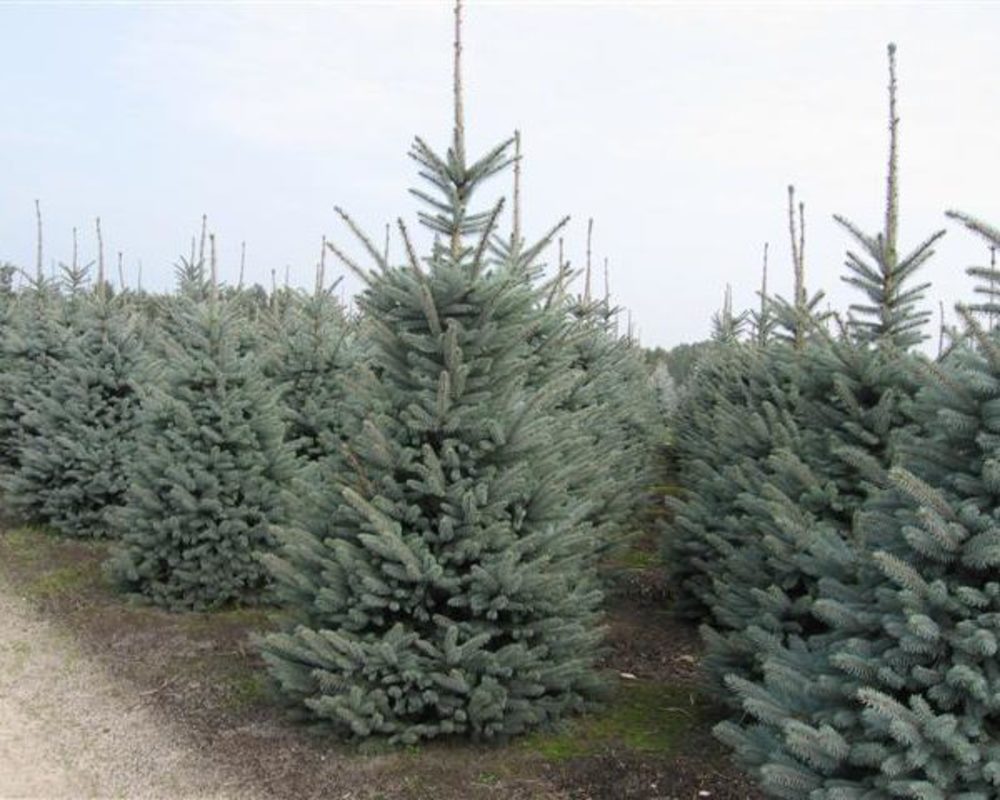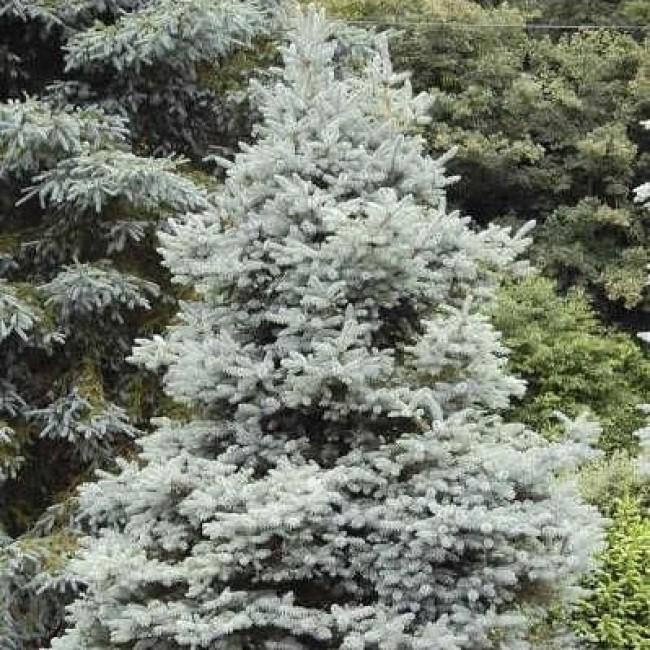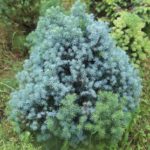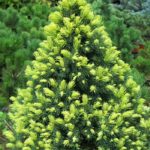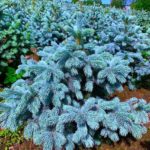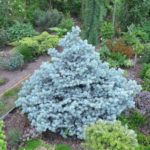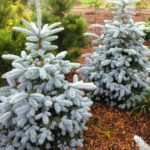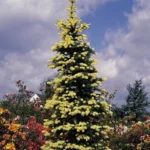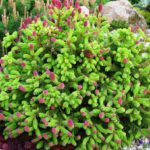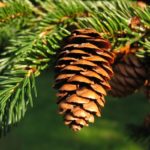Blue Trinket spruce is a tree with a compact conical crown that reaches a height of 5-8 meters. The culture is distinguished by regular dense tiers and short bluish needles. A characteristic feature of the plant is its slow development, which allows it to be actively used in landscape design. The culture is used as a tapeworm in small gardens and is used to create beautiful compositions.
Description and history of origin
This variety of prickly spruce was developed in the Netherlands in 1960.This crop is considered an excellent representative of blue spruce trees, which has a compact size. On average, an adult plant reaches 5 meters. Sometimes it grows up to 8 meters. Spruce is characterized by slow growth. By the age of 10, its height does not exceed 1 meter.
The tree is characterized by a wide cone-shaped crown. As the plant develops, it becomes narrower. The average diameter of the crop is 4 meters. It is characterized by silver-blue needles, which have a rigid and prickly structure.
Advantages, disadvantages, features
The description of the spruce indicates the following advantages:
- drought resistance;
- decorative properties;
- high resistance to frost;
- low maintenance requirements;
- possibility of growing in different regions;
- resistance to strong winds;
- resistance to urban conditions.
At the same time, the culture also has some disadvantages. The main disadvantage is the susceptibility of spruce to pests and diseases. The tree often suffers from spider mite attacks and scab development.
Planting and care
This crop is considered undemanding in terms of soil composition. However, it is best to plant it in a fertile substrate. It is important to take into account that spruce does not tolerate heavy soil moisture and stagnant moisture. In order for the crop to have a rich color of needles, it should be planted in sunny, well-lit areas. The tree can easily grow in the shade. But in this case it will lose color saturation. When planting several crops, the interval between them should be 3.5 meters.
The culture is considered very undemanding to growing conditions. At the same time, to preserve its decorative effect, you still need to adhere to certain rules of agricultural technology. In the year of planting, the young plant requires systematic watering.This is due to poor development of the root system. As a result, the plant is not able to absorb moisture on its own.
Subsequently, in dry weather, the tree can be watered 1-2 times a week. Fertilizing should be applied to the soil 2 times during the season. This is recommended to be done in spring and autumn. In April and May it is worth using nitroammophoska - 30-40 grams per 1 square meter. In October, spruce requires phosphorus-potassium fertilizers.
Blue Trinket spruce is characterized by high resistance to frost. It can withstand frosts down to -34 degrees. Therefore, only young trees need to be covered. This is done for several years after planting.
The crop is susceptible to attacks by spider mites and the development of scab. Therefore, it is important to carry out systematic treatments to protect the plant. To avoid problems, the tree needs to be properly cared for.
Fungal pathologies develop in conditions of high humidity. Therefore, the soil needs to be watered moderately, controlling its condition. From time to time it is worth inspecting the crown so as not to miss the first symptoms of pathologies or pest attacks.
Application
This spruce variety is a very attractive crop that is often used in landscape design. It is often used as a solitaire or to create group compositions.
Blue Trinket spruce is a fairly common plant that is often used to decorate garden plots. In order for a crop to retain its decorative properties, it must be planted correctly and strictly follow the rules of agricultural technology.

